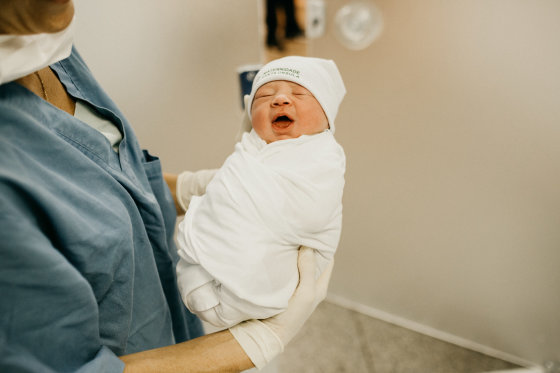Succeeded to naturally conceive a rabbit with an artificially made uterus

Researchers in the field of bioengineering have succeeded in culturing cells taken from rabbits and creating an artificial uterus that is actually capable of spontaneous pregnancy. Although not yet in clinical trials, the development of this technology may be useful in the treatment of human infertility.
A tissue-engineered uterus supports live births in rabbits | Nature Biotechnology
A tissue-engineered uterus supports live births in rabbits | Nature Research Bioengineering Community
https://bioengineeringcommunity.nature.com/posts/a-tissue-engineered-uterus-supports-live-births-in-rabbits

Bioengineered uteri support pregnancy-ScienceDaily
https://www.sciencedaily.com/releases/2020/06/200629120217.htm
This research was conducted by researchers at the Wake Forest Institute for Regenerative Medicine (WFIRM) in the United States, which conducts cutting-edge research in the field of regenerative medicine. So far, the WFIRM research team has succeeded in preclinical tests of culturing cells taken from human patients on biodegradable scaffolds and applying them to human tubular organs and non-tubular organs. , These technologies are expected to be used in the medical field where the shortage of donors is called out.
And newly, the research team announced that it has succeeded in creating a rabbit uterus by bioengineering. The uterus is a complex organ with high functionality that implants fertilized eggs and raises the fetus, so it is considered extremely difficult to design.
In the experiment, the rabbits are divided into the following 4 groups, and different treatments are performed.
1: Group with hysterectomy and transplanted scaffolds containing cultured rabbit cells
2: Group with hysterectomy without cell culture and transplanted with polymer-only scaffolds
3: Control group from which the uterus was removed
4: Group undergoing fake laparotomy
Six months after surgery, only the group of rabbits that received the cell-cultured scaffolds had structures containing organized luminal epithelium, glandular epithelium, stroma, vascularized mucosa, and two layers of uterine muscle. Was being developed. Four out of ten rabbits in this group are naturally pregnant using the reconstructed uterus, and the research team believes that it is possible to use this technology to help infertility treatment.

'This study shows that artificially created uterine tissue can support common pregnancies, as well as the size and size of the fetus grown in the artificial uterus,' said Anthony Atala, Principal Investigator and Director of WFIRM. It has been shown to weigh as much as a fetus raised in a natural womb and has shown normal fetal development.'
Transplanting a uterus from a deceased or living person is an effective treatment for infertility, but when performing a transplant operation, it is necessary to suppress rejection. By June 2020, 70 uterine transplant procedures have been performed worldwide, with fewer than 10 children born to a transplanted uterus in the United States. If you could artificially create your uterus from your own cells, you wouldn't have to worry about rejection, so uterine transplant surgery and pregnancy with an artificial uterus could shine the light. ..
Related Posts:







